
Dec 21, 2023 | Case Study
Introduction: This case study focuses on the life and challenges faced by Khadija Begum, a widowed woman living in Bahir Kushia village of Gharisha union under Naria upazila of Shariatpur district. Khadija’s story sheds light on the significance of forecast-based response projects in enhancing disaster preparedness, especially in vulnerable communities.
Background: Khadija Begum’s life took a tragic turn when she was married off to Nannu Sardar at a very young age. Their marriage was relatively short-lived, as Nannu Sardar passed away just f ive years into their marriage, leaving behind a 2- year-old son. Devastated and helpless, Khadija sought refuge with her father, Kashem Sarkar, in her old family home. Kashem, already struggling to support his own family due to financial constraints, now faced the additional burden of providing for his widowed daughter and grandson.
Challenges:
1. Financial Strain: Kashem Sarkar’s limited financial resources were stretched thin between his own family’s needs and those of his daughter and grandson. This financial strain was a constant hurdle in ensuring the well-being of Khadija and her son.
2. Health Issues: Khadija’s baby son’s health was compromised due to malnutrition, making him prone to frequent illnesses. The lack of proper nutrition and healthcare further exacerbated their challenges.
3. Natural Calamities: The area where Khadija and her family resided was susceptible to floods and river erosion. The looming threat of natural calamities filled them with anxiety, as they lacked the means to seek shelter and protect their belongings in case of disaster.
Hope and Relief through Forecast-Based Response Project:
Amid these challenges, Khadija and her family found hope in the forecast-based response project implemented by the World Food Programme (WFP) through the Shariatpur Development S Society (SDS).
Khadija Begum expressed her optimism about the project, stating, “If we have the financial capacity to prepare ourselves before disaster strikes, it can play an important role in protecting people’s lives and
property. Such advance relief schemes of WFP will definitely help in saving lives and property during calamities.”
Impact of Forecast-Based Response: The forecast-based response project had several positive impacts on Khadija Begum’s life and the lives of those in similar situations:
1. Early Warning and Preparation: If the project provided timely weather forecasts and disaster alerts, enabling families like Khadija’s to prepare in advance. They can be take precautions to secure their belongings and evacuate to safer locations when necessary.
2. Financial Support: The project offered financial assistance to vulnerable families, allowing them to stock essential supplies, reinforce their homes against potential disasters, and seek medical attention for their children.
3. Community Resilience: By focusing on vulnerable communities, the project contributed to building resilience at the grassroots level. Communities became better equipped to handle disasters and protect their lives and assets.
4. Awareness and Empowerment: The project raised awareness about disaster preparedness and equipped families with the knowledge and tools to respond effectively in emergencies.
Conclusion: Khadija Begum’s story underscores the importance of forecast-based response projects in enhancing disaster preparedness among vulnerable communities. By providing early warnings, financial assistance, and empowerment, these projects have the potential to save lives, protect property, and improve overall community resilience in the face of natural calamities. Khadija’s hopeful outlook serves as a testament to the positive impact such initiatives can have on the lives of those most at risk.
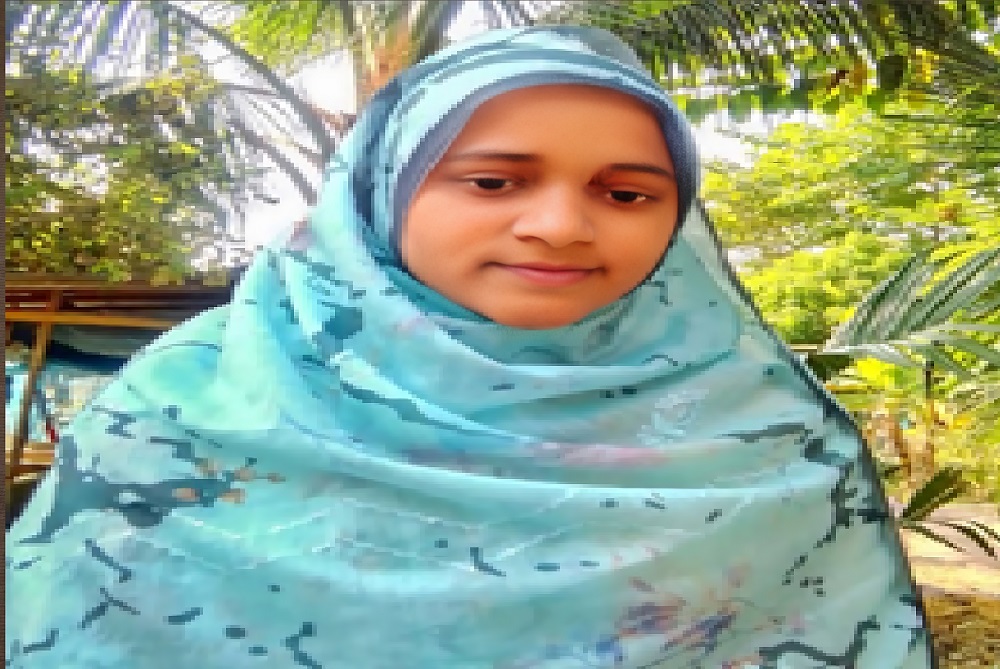
Dec 21, 2023 | Case Study
Introduction: As part of the 16 Days of Activism campaign, this case story sheds light on the transformative journey of Sayla Akhtar, a 16-year-old girl from Shubogram village, of Naria Upazila under Shariatpur district. It exemplifies the impact of community-based interventions in combating gender-based violence and empowering young individuals to pursue their dreams.
Subject’s Background: Sayla Akhtar, a lass nine student, initially faced the challenge of gender-based violence from Aslam, a local scoundrel and drug addict. Sayla’s aspirations for education and personal growth were hindered by persistent threats and harassment, disrupting her daily life.
Challenge/Issue Faced: The primary challenge faced by Sayla was the unwarranted attention and threats from Aslam, who, angered by rejection, resorted to intimidation, making Sayla’s journey to school a distressing experience.
Intervention: Sayma Akter, a volunteer worked with SDS for implement the WFP supported Anticipatory actions project for flood prone Padma Basin introduced Sayla to the ‘Girl Power’ project run by the SDS. Smriti Akhtar Srabanti, a worker of the project, played a pivotal role by reporting the matter to Naria Upazila Nirbahi Officer Sanjida Yasmin. With administrative support, a counselling session was organized with Aslam to address the issue and emphasize the severity of his actions.
Impact: The intervention resulted in a transformative change. Aslam, realizing the gravity of his actions, expressed remorse, sought forgiveness, and pledged to refrain from such behaviour in the future. The community rallied around Sayla, eliminating obstacles to her education and dreams. Sayla became a member of the Kishori Club under SDS Girl Power Project finding a supportive network and a platform to advocate against gender-based violence.
Subject’s Perspective: Sayla expressed gratitude to her family, the administration, and the SDS for their supportive roles in realizing her dreams. She emphasized the significance of collective efforts in combatting gender-based violence.
Lessons Learned: This case underscores the importance of community-driven initiatives in combating gender-based violence. Collaborative efforts involving NGOs, community members, and administrative bodies can bring about meaningful change. It emphasizes the need for proactive intervention and counselling to address the root causes of gender-based violence.
Conclusion: Sayla’s triumph over adversity exemplifies the impact of concerted efforts in the fight against gender-based violence against the women and girls. As we commemorate the 16 Days of Activism, this story reinforces the ongoing struggle for gender equality and the transformative power of community-driven initiatives.
Call to Action: Join us in supporting organizations like the Shariatpur Development Society and participating in the 16 Days of Activism campaign. Advocate for gender equality, donate to relevant causes, and engage in community initiatives to create a safer, more equitable world.
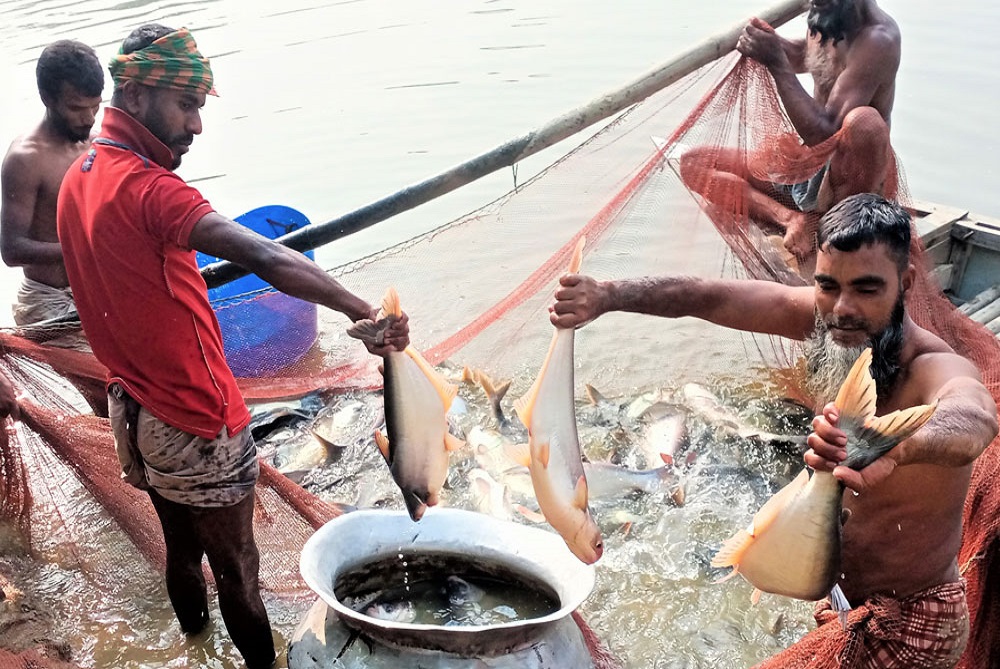
Sep 12, 2022 | Case Study
শরীয়তপুর জেলার আওতায় জাজিরা শাখা মাটি সমিতির সদস্য হেলেনা বেগম। স্বামী মোঃ আঃ সাত্তার মোড়ল পেশায় একজন ব্যবসায়ী। দুই ছেলে নিয়ে ৪ সদস্যের সংসার হেলেনা বেগমের। স্থানীয় বাজারে মুদি দোকানে বিভিন্ন পন্য বিক্রয় করে তাঁদের সংসার চলতো।
পৈতিকভাবে দুই একর ফসলি জমির মালিক হেলেনা বেগমের স্বামী। জমি নিচু হওয়ায় একবারের বেশি ফসল হয় না। এতে করে তাঁদের চার সদস্যের সংসার চালানো অনেক কঠিন হয়ে পড়েছে। তাই হেলেনা বেগম স্বামীর কাজের পাশাপাশি বাড়তি আয় করার জন্য আগ্রহ প্রকাশ করেন। কিন্তু কিভাবে কী করবেন সেটি তিনি বুঝে উঠতে পারছিলেন না। একদিন তার এক আত্নীয়র কাছ থেকে এসডিএস এর সমিতি সম্পর্কে তিনি জানতে পারেন। এরপর ঐ এলাকায় এসডিএস’র সমিতি মিটিং এ উপস্হিত হন। সবকিছু শুনে মাঠ কর্মীর সহায়তায় ২০১৯ সালে সমিতিতে ভর্তি হয়ে সঞ্চয় জমা করতে থাকেন হেলেনা বেগম। পরবর্তীতে এসডিএস এর জাজিরা শাখা থেকে চল্লিশ হাজার (৪০,০০০) টাকা লোন নিয়ে স্বামীর সাথে পরামর্শ করে এক ফসলি নীচু জমির কিছু অংশ খনন করে একটি পুকর তৈরি করেন। সেখানে এসডিএস’র মৎস্য কর্মকর্তা মোঃ আনোয়ার হোসেনের পরামর্শ নিয়ে মাছ চাষাবাদ শুরু করেন ।
প্রথমে প্রস্তত পুকুরে মাছের পোনা মজুদ করেন। এরপর পুকুরে মাছের খাদ্য প্রয়োগ এবং পরিচর্যা করেন। মাছ দ্রুত বড় এবং তা বাঁজারে বিক্রি করেন। এতে সব খরচ বাদ দিয়ে মাছ চাষে বেশ লাভ হয় তার। দ্রুত লাভ হওয়ায় আরও বেশি করে মাছ চাষের আগ্রহ জন্মে হেলেনা বেগমের। সম্ভাব্যতা যাচাই করে এসডিএস এর বাস্তবায়নাধিন পিকেএসএফ এর অর্থায়নে মৎস্য ও প্রাণিসম্পদ ইউনিট আওতায় ভিয়েতনাম পাঙ্গাস-কার্প মিশ্রচাষ প্রযুক্তিতে মাছের পোনা এবং উপকরন সহায়তা প্রদান এবং এসডিএস থেকে প্রশিক্ষন এবং মাছচাষে সহায়তার বিষয় সম্পর্কে তাকে জানানো হয়।
হেলেনা বেগম স্বামীর সহযোগিতায় এসডিএস থেকে দ্বিতীয় পর্যায়ে এক লক্ষ টাকা ঋণ নিয়ে নীচু দুই শতাংশ জমি খনন করে সমস্ত জমিটাতেই পকুর তৈরী করেন। পুকুর প্রস্তুত করে হেলেনা বেগম ৭০০০ টি ভিয়েতনাম পাঙ্গাস এবং ৫০০০টি কার্পজাতীয় মাছের পোনা ছাড়েন। নিয়মিত খাদ্য প্রদান এবং পরিচর্যা করতে থাকেন। মাছ লালন পালন করে স্হানীয় এবং ঢাকায় মাছের আড়তে বিক্রয় করতে থাকেন। এতে ১০ মাসে মোট ১২,০০০ কেজি মাছ বিক্রয় করে ১৩,৫০,০০০ টাকা আয় হয়। এছাড়া পুকুর পাড়ের সবজী এবং কলা বিক্রয় করে আয় করেন আরও ৩৫০০০ টাক। মাছ,কলা ও সবজী চাষে খরচ তার হয়েছে ৮,৭০,০০০ টাকা। খরচ বাদ দিয়ে তার মুনাফা পেয়েছে ৫,১৫,০০০টাকা। এছাড়াও তার পুকুরে বিভিন্ন প্রজাতির ৩০০ কেজির অধিক মাছ রয়েছে। হেলেনা বেগম এবং তার স্বামী এলাকায় এখন সফল মৎস্যচাষী হিসেবে সকলের কাছে পরিচিতি। এলাকার আগ্রহী ক্রেতারা এখন হেলেনা বেগমের পুকুর থেকে মাছ ক্রয় করেন। মাছ চাষের লাভের টাকা দিয়ে তিনি একটি গরু ক্রয় করেছেন।হেলেনা বেগম এর সংসারে এখন স্বচ্ছলতা ফিরে এসেছে। হেলেনা বেগম তার জীবনের মোড় ঘুরিয়ে আয়ের পথ তৈরির জন্য এসডিএস এর প্রতি কৃতজ্ঞতা প্রকাশ করেন।
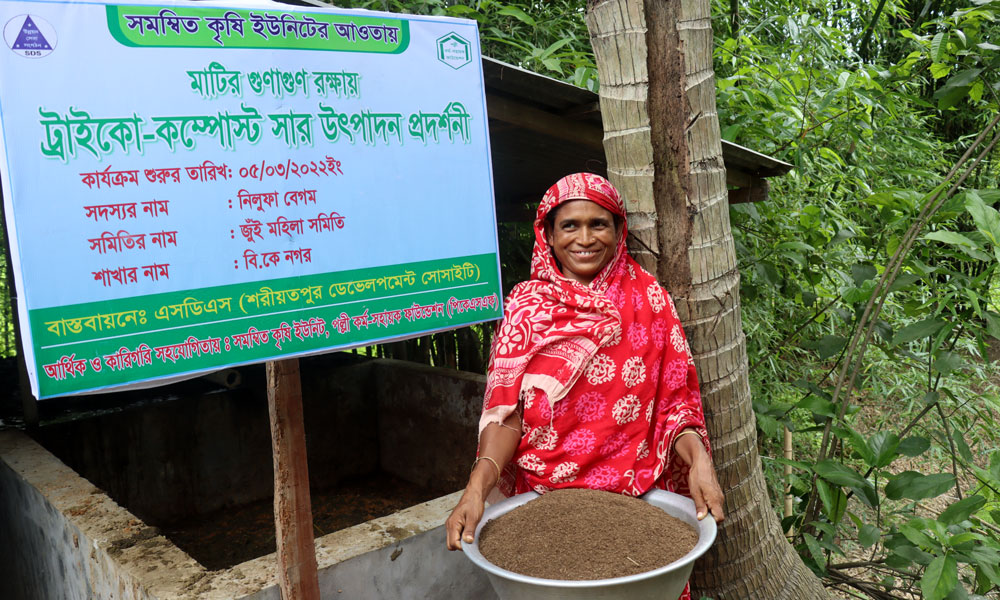
Aug 13, 2022 | Case Study
শরীয়তপুর জেলার জাজিরা উপজেলায় অনেক কৃষক গাভি পালন করে জীবিকা নির্বাহ করে। গাভি পালনকারী খামারীরা গাভির বর্জ সংরক্ষণের কৌশল না জানায় বর্জ যেখানে সেখানে ফেলে দিয়ে পরিবেশ দূষণ করে। আজকে সেই গ্রামের নারীরা এসডিএস-এর সমম্বিত কৃষি ইউনিটের সহযোগিতায় গাভির বর্জ ব্যবহার করে ট্রাইকো-কম্পোস্ট সার উৎপাদন করে সংসারের কাজে সহযোগিতা করে যাচ্ছে। তাদের কাছ হতে জানা যায়, ট্রাইকো-কম্পোস্ট সার একটি উন্নতমানের জৈব সার। উৎকৃষ্টমানের জৈব সার হওয়ায় জমিতে ব্যবহারের ফলে ফলন অনেক ভালো হয় এবং ফসলে রোগ-জীবানু অন্যান্য ফসলের তুলনায় কম হয়। পরিবেশ বান্ধব হওয়ায় নিরাপদ সবজি উৎপাদনে ট্রাইকো-কম্পোস্ট সার ব্যবহার ব্যাপক ভুমিকা রাখছে। মাটির উর্বরতা বৃদ্ধির এবং জৈব বালাইনাশক হিসেবে ট্রাইকো-কম্পোস্ট প্লান্ট-এর অবদান অনেক। কৃষকরা নিজের জমিতে ব্যবহারের পাশাপাশি অতিরিক্ত জৈব সার বাজারে বিক্রি করে। প্রতি ট্রাইকো-কম্পোস্ট প্লান্ট হতে ৪৫-৫০ দিনে প্রায় ৯-১০ মন সার উৎপাদন হয়। এই সার ৮ টাকা কেজি দরে বিক্রি করে প্রায় ৩৬০০-৪০০০ টাকা আয় করে। বিকে নগর ইউনিয়নের মৃধাকান্দি গ্রামের ট্রাইকো-কম্পোস্ট সার উৎপাদনকারী রিজিয়া বেগম বলেন, আগে আমরা গরুর গোবর দিয়ে মুঠা বানাইতাম এবং অতিরিক্ত গোবর গরুর গোয়াল ঘরের পিছনে ফেলে দিতাম। এসডিএস-এর কৃষি অফিসার গোবর দিয়ে ট্রাইকো-কম্পোস্ট সার তৈরীর জন্য বলেন। স্যারের পরামর্শ মোতাবেক এসডিএস-এর নিকট প্রশিক্ষণ নিয়ে আমরা জৈব সার তৈরী শুরু করি। এই সার বাজারে বিক্রি করে আমি বছরে প্রায় ২০০০০-২৪০০০ টাকা আয় করছি। এতে আমি আমার সন্তানের লেখাপড়ার খরচসহ অন্যান্য কাজে এই টাকা ব্যয় করতে পারছি। আমার স্বামী এতে অনেক খুশি। ট্রাইকো-কম্পোস্ট প্রস্তুতি বিষয়ে মহিউদ্দীন হাজী কান্দী গ্রামের কৃষাণী হালিমন বেগম বলেন,২০২০ সালে এসডিএস-এর দেওয়া ইট, বালু, সিমেন্ট দিয়ে ৪ হাত বাই ২ হাত মাপের দুইটি চেম্বার তৈরী করি এবং চেস্বারের নিচে দুটি ছিদ্র করি। চেম্বারে পাশে গোবর, কচুরীপানা, ভুষি, কাঠের গুরা, মুরগীর বিষ্ঠা, ছাই, বাড়ির পচনশীল উচিষ্ঠাংশ ইত্যাদি স্তুপ আকারে জড়ো করি। একটি বালতিতে ১২ লিটার পানির মধ্যে ১০০ গ্রাম ট্রাইকো-কম্পোস্ট পাউডার, ৪ কেজি খৈল, ৪ কেজি চিটাগুড় মিশ্রিত করে লেই তৈরী করি। চেম্বারে স্তুপ হতে ৮ ইন্ঞি সম পরিমান বর্জ নেই। ৫ কেজি লেই এ ৫ লিটার পানি দিয়ে পাতলা করে মিশ্রন তৈরী করি। এই মিশ্রিত পানি চেম্বারের ৮ ইন্ঞি স্তুপে ছিটিয়ে দেই। পরে স্তুপ কোদাল দিয়ে ভালোভাবে উলট-পালট করে দেই। এভাবে ৮ ইন্হি পর পর স্তুপ তৈরী করে চেম্বারটি পূর্ণ করে উপড়ে পাটের ছালা বিছিয়ে দেই। আবার সপ্তাহে সপ্তাহে চেম্বারের মিশ্রন উলট-পালট করি। এভাবে দেখা যায় ৪৫-৫০ দিনের মধ্যে জৈব সার তৈরী হয়। ২০ দিন পর হতে চেম্বারের নিচের ছিদ্র দিয়ে সে কালো পানি বের হয় তা আমরা জমিতে স্প্রের মাধ্যমে ব্যবহার করি। এই মিশ্রনটি ভিটামিনের মতো কাজ করে। এসডিএস এর কৃষি কর্মকর্তা জনাব খাজি আলম বলেন, এসডিএস-এর সহযোগিতায় এবং পল্লী কর্ম-সহায়ক ফাউন্ডেশন (পিকেএসএফ)-এর অর্থায়নে সমম্বিত কৃষি ইউনিটের আওতায় ২০১৭ সাল হতে মাটির গুণাগুণ রক্ষায় ট্রাইকো-কম্পোস্ট সার উৎপাদন নিয়ে কাজ করে আসছি। এ সার উৎপাদনের জন্য আমরা কৃষককে প্রশিক্ষণ দেওয়া সহা বিনামূল্যে কৃষকদের ইট, বালু সিমেন্ট সরবরাহ করি। ট্রাইকো-কম্পোস্ট সারের মূল উপাদান হিসেবে ট্রাইকোডার্মা পাউডার ব্যবহার করা হয়। ট্রাইকোডার্মা মূলত মাটিতে মুক্তভাবে বসবাসকারী একটি উপকারী অনুজীব ছত্রাক। এটি মাটিতে বসবাসকারী ক্ষতিকর জীবাণু যেমন ছত্রাক, ব্যাকটেরিয়া ও নেমাটোড মেরে ফেলে এবং পচনক্রিয়া ত্বরাম্বিত করে। ফলে এ জৈব সার মাটিতে প্রয়োগ করলে মাটিবাহিত রোগ প্রতিরোধ করে, মাটির স্বাস্থ্য ও পরিবেশ সুরক্ষায় সাহায্য করে, মাটির উর্বরতা বৃদ্ধি করে, রাসায়নিক সার ও কীটনাশক প্রয়োগের ফলে যে বিষক্রিয়ার সৃষ্টি হয় তা কমাতে সাহায্য করে, মাটির অম্লত ও পিএইচ মানের ভারসাম্য আনে, মাটির পানি ধারন ক্ষমতা বৃদ্ধি করা সহ অনেক উপকার করে। জাজিরা উপজেলায় ৩০ টি ট্রাইকো-কম্পোস্ট প্লান্ট হতে নিয়মিত সার উৎপাদন হচ্ছে। বাজারেও এ সারের ব্যাপক চাহিদা তৈরী হয়েছে। মূলনা ইউনিয়নের সবজি চাষি বাবু শরীফ বলেন, আমি সারের দোকান হতে এসডিএস-এর খামারীর উৎপাদিত ট্রাইকো-কম্পোস্ট সার শসা ক্ষেতে ব্যবহার করি। আমার শসার চারায় কোন গড়া পচা রোগ হয় নাই কিন্তু আমার পাশের ক্ষেতের শসা গোড়া পচা রোগ হয়ে অনেক গাছ মারা গেছে। এই সার ব্যবহারে গাছরের রোগ অনেক কম হয়েছে এবং গাছ দ্রুত বৃদ্ধি পেয়েছে। আমাদের এলাকার কৃষক ট্রাইকো-কম্পোস্ট জৈব সার ছাড়া অন্য কোন কোম্পানির জৈব সার ব্যবহার করে না। সার বিক্রয়কারী ফারুক কাজি বলেন, কৃষক পর্যায় এ সারের ব্যাপক চাহিদা রয়েছে। আমি প্রতি মাসে প্রায় ৫০-৬০ মন ট্রাইকো-কম্পোস্ট সার বিক্রি করি। তবে সমস্যা হচ্ছে সারের চাহিদা অনুযায়ী এ সার উৎপাদনকারী যোগান দিতে পারেনা। জৈব কৃষির একটি প্রধান উৎস হতে চলেছে ট্রাইকো-কম্পোস্ট জৈব সার। ছত্রাকনাশক দমনে ট্রাইকো-কম্পোস্ট হতে পাওয়া তরল লিচেট কার্যকরী ভুমিকা পালন করছে। আবার এ সার ব্যবহারে জমিতে রাসায়নিক সারের পরিমানও কম লাগছে। গরুর বর্জ ব্যবহার করে গ্রামের গৃহিনীর আয়ের প্রধান উৎস হয়ে উঠছে ট্রাইকো-কম্পোস্ট উৎপাদন। ধীরে ধীরে পরিবেশ বান্ধব নিরাপদ সবজি উৎপাদনে ট্রাইকো-কম্পোস্ট সারের ব্যবহার সমগ্র বাংলাদেশে ছড়িয়ে পরবে বলে আশা করা যায়।
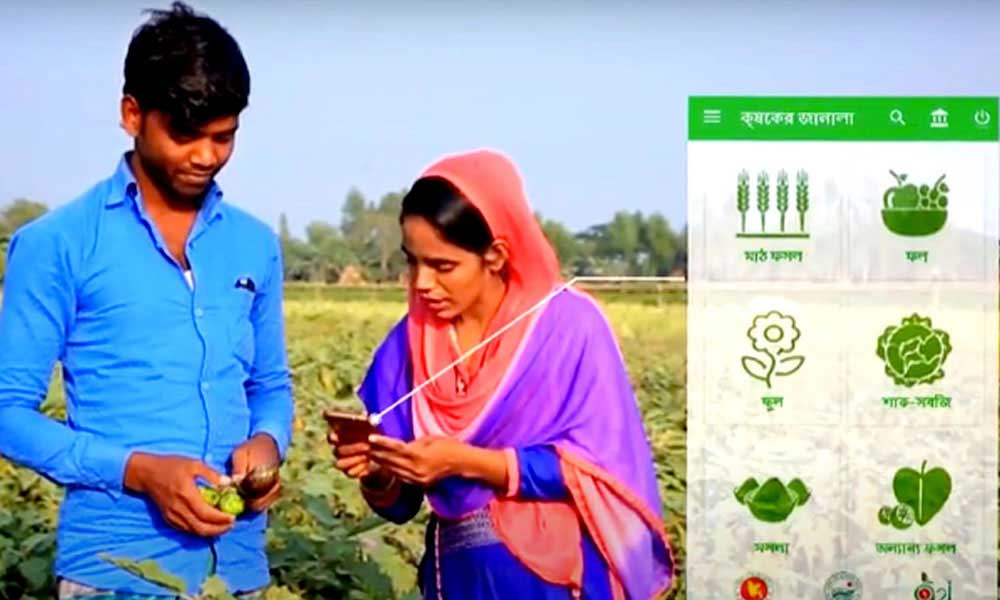
Jun 28, 2021 | Case Study
 Farmer Mst. Rahima is the inhabitant of Kachikata union under Bhedorgonj Upazila of Shariatpur district. Before her marriage she has completed SSC. After her marriage, she cultivated her husband’s land .Because her husband is working in abroad. She cultivated potato, chili, sweet gourd, bottle gourd, and ash gourd, red amaranth and Indian spinach. Yield of her land is more than others. So farmers came to her land to see the cultivation procedure and yield. She describes her production technique to the interested farmers. This year PSAT (Promoting Sustainable Agricultural Technology for Climatic Vulnerable Char-Dwellers) Project personnel went to her village for identification of Lead farmer. Most of the farmers of that village said she is the most qualified person as a lead farmer. After joining as a lead farmer of PSAT project, she has got more climates adaptive modern agriculture related ICT based training. Now she is trained lead farmer. She is arranged and facilitated season based court yard session of that village.
Farmer Mst. Rahima is the inhabitant of Kachikata union under Bhedorgonj Upazila of Shariatpur district. Before her marriage she has completed SSC. After her marriage, she cultivated her husband’s land .Because her husband is working in abroad. She cultivated potato, chili, sweet gourd, bottle gourd, and ash gourd, red amaranth and Indian spinach. Yield of her land is more than others. So farmers came to her land to see the cultivation procedure and yield. She describes her production technique to the interested farmers. This year PSAT (Promoting Sustainable Agricultural Technology for Climatic Vulnerable Char-Dwellers) Project personnel went to her village for identification of Lead farmer. Most of the farmers of that village said she is the most qualified person as a lead farmer. After joining as a lead farmer of PSAT project, she has got more climates adaptive modern agriculture related ICT based training. Now she is trained lead farmer. She is arranged and facilitated season based court yard session of that village.
Also she is gone to farmer’s field and try to solve their problem by the help of agril website supported Android mobile phone. In future her aim, she will be adapted new technology and serve in the farmer. Farmers are pleased of her. We seem that it is the successful strategy of Farmers Rahima. If it is ongoing, the agriculture of this area will be increased. So it is the helpful for remove the hunger and poverty in this area. And it’s effects will be shown Nationally.
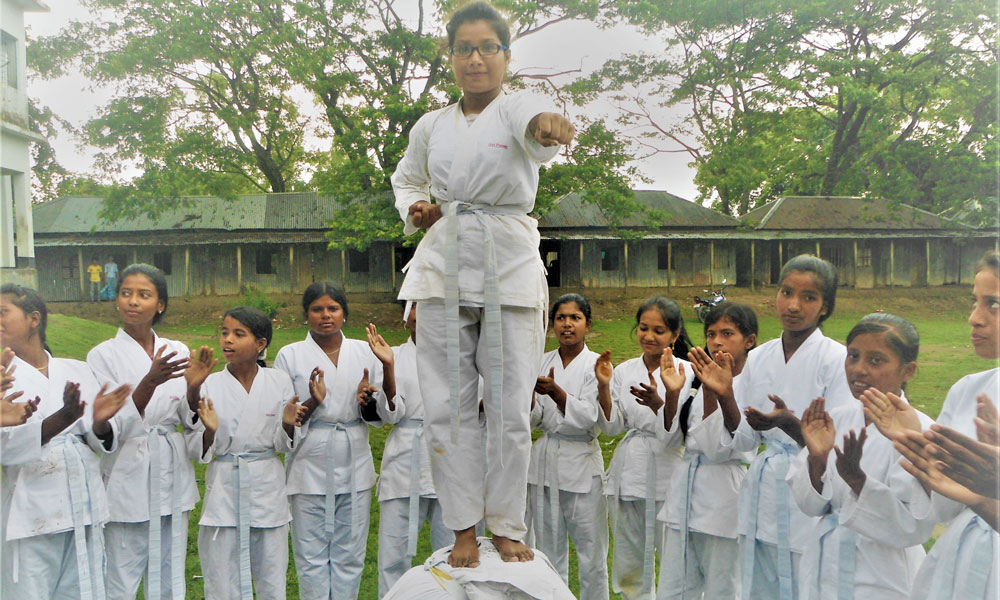
Jun 28, 2021 | Case Study
“ I want to be a good karate instructor to make girl as self dependant.”
Mishti Akter, a child of very needy family. Her family didn’t want to continue her study. When she was class 9, she was bound to stop study due to eve teasing and poverty. Her parents had attempted to arrange her marriage. In the mean time she got involved with ‘Girl club’ initiated by Girl Power Project GPP, SDS.
 “When I got involved with Girl club, my club members convinced my parents to stop marriage. I restarted study and rebuilt my dream. I passed the SSC examination in 2013 and continuing my study. I received an advanced training on Karate and got a chance as a local Karate trainer for my best performance and getting monthly remuneration. ”
“When I got involved with Girl club, my club members convinced my parents to stop marriage. I restarted study and rebuilt my dream. I passed the SSC examination in 2013 and continuing my study. I received an advanced training on Karate and got a chance as a local Karate trainer for my best performance and getting monthly remuneration. ”
“Once upon a time my parents were wanted to marry me early due to fear of eve teasing and poverty but teasers are now afraid of me. I want to be a good karate instructor to make girl as self dependant.”







 Farmer Mst. Rahima is the inhabitant of Kachikata union under Bhedorgonj Upazila of Shariatpur district. Before her marriage she has completed SSC. After her marriage, she cultivated her husband’s land .Because her husband is working in abroad. She cultivated potato, chili, sweet gourd, bottle gourd, and ash gourd, red amaranth and Indian spinach. Yield of her land is more than others. So farmers came to her land to see the cultivation procedure and yield. She describes her production technique to the interested farmers. This year PSAT (Promoting Sustainable Agricultural Technology for Climatic Vulnerable Char-Dwellers) Project personnel went to her village for identification of Lead farmer. Most of the farmers of that village said she is the most qualified person as a lead farmer. After joining as a lead farmer of PSAT project, she has got more climates adaptive modern agriculture related ICT based training. Now she is trained lead farmer. She is arranged and facilitated season based court yard session of that village.
Farmer Mst. Rahima is the inhabitant of Kachikata union under Bhedorgonj Upazila of Shariatpur district. Before her marriage she has completed SSC. After her marriage, she cultivated her husband’s land .Because her husband is working in abroad. She cultivated potato, chili, sweet gourd, bottle gourd, and ash gourd, red amaranth and Indian spinach. Yield of her land is more than others. So farmers came to her land to see the cultivation procedure and yield. She describes her production technique to the interested farmers. This year PSAT (Promoting Sustainable Agricultural Technology for Climatic Vulnerable Char-Dwellers) Project personnel went to her village for identification of Lead farmer. Most of the farmers of that village said she is the most qualified person as a lead farmer. After joining as a lead farmer of PSAT project, she has got more climates adaptive modern agriculture related ICT based training. Now she is trained lead farmer. She is arranged and facilitated season based court yard session of that village.
 “When I got involved with Girl club, my club members convinced my parents to stop marriage. I restarted study and rebuilt my dream. I passed the SSC examination in 2013 and continuing my study. I received an advanced training on Karate and got a chance as a local Karate trainer for my best performance and getting monthly remuneration. ”
“When I got involved with Girl club, my club members convinced my parents to stop marriage. I restarted study and rebuilt my dream. I passed the SSC examination in 2013 and continuing my study. I received an advanced training on Karate and got a chance as a local Karate trainer for my best performance and getting monthly remuneration. ”